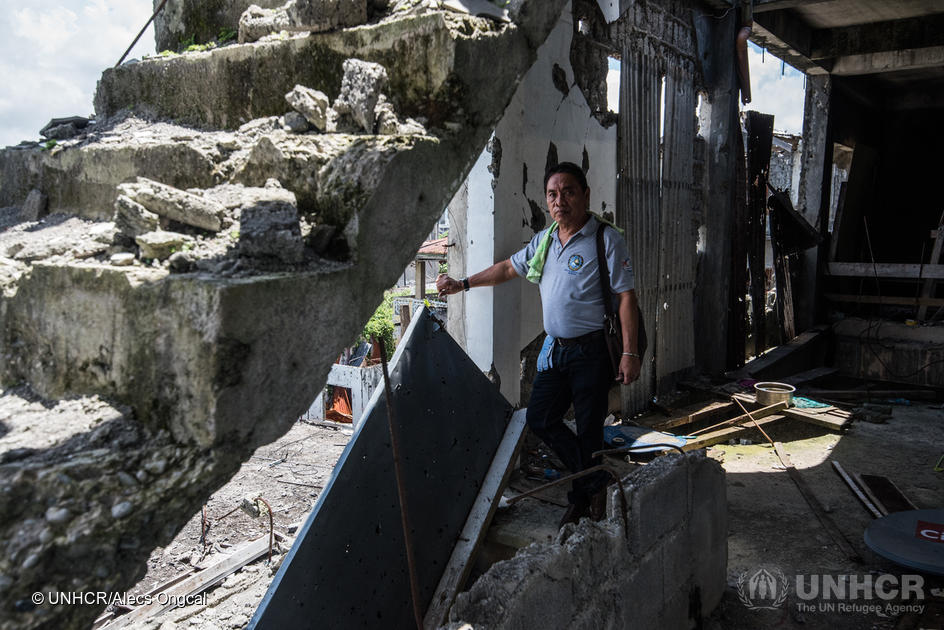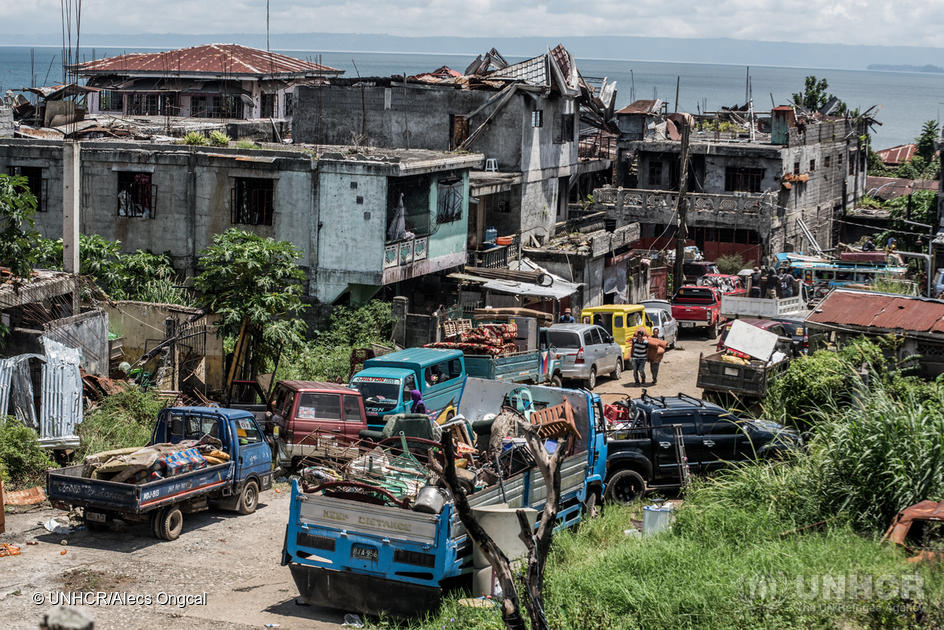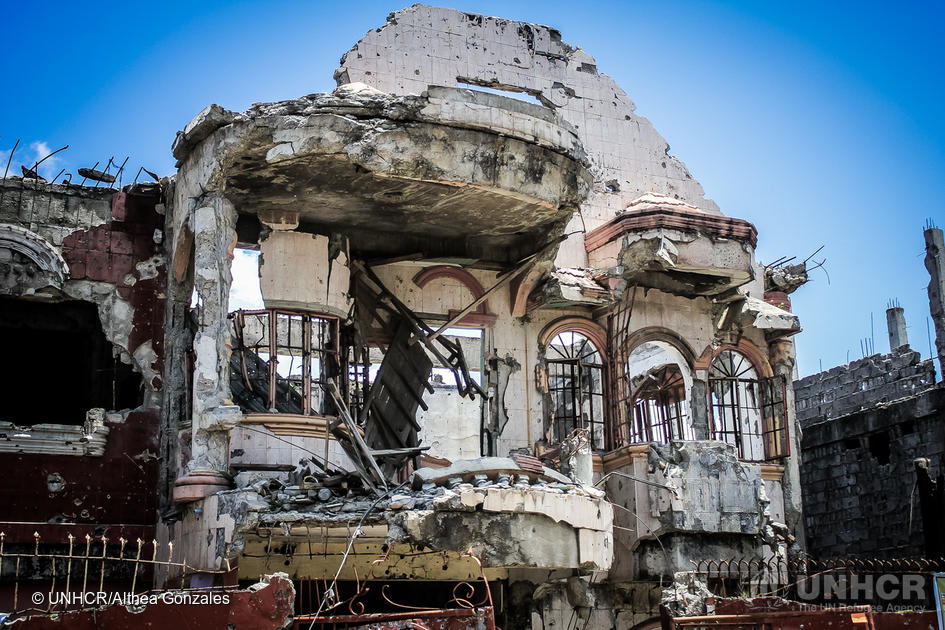Hope in the rubble for displaced Marawi residents
Solaiman and Saada Alip were counting the days to their retirement when conflict in Marawi City broke out a year ago. They were trapped for 16 days as the conflict raged on before fleeing on June 8. Months later, they visit their home, only to discover much of it in ruins.
Solaiman and Saada Alip were counting the days to their retirement when conflict in Marawi City broke out a year ago. They did not imagine that after many decades of hard work, their retirement will be marked by escaping conflict as well as an emotional, painful homecoming nearly a year later.
Having experienced displacement before—and thinking that the conflict would be over in two days—Solaiman and Saada chose to stay at home to wait for fighting to end. The rest of their family evacuated the city at the onset of hostilities.
“I told my family, you go ahead, because after two or three days everything will be back to normal,” he recounts. “On the fifth day, I realized that what was happening was no longer normal,” Solaiman says.
Solaiman and Saada lived with their two children who already had families of their own. Their newly renovated house, where they lived, was located in East Marinaut, one of the areas that bore the brunt of the fighting between government forces and pro-ISIS militants.
The memory of 16 days of being holed up in their house as the conflict raged on remains with Solaiman. “On the fifth day, we started hearing bombs and guns firing all around us. That was all we could hear.” Solaiman and his wife finally were able to flee on June 8.
An emotional homecoming
For months, access to their village in Marawi’s worst affected areas was restricted while clearing operations continued.
It was only in April 2018 when the government facilitated visitation exercises allowed residents like Solaiman to return to their homes albeit briefly. Seeing the extent of the devastation for the first time, they salvaged what little possessions they could recover from the rubble. Only 85% of the areas were cleared of explosive remnants but this did not deter the determined residents to see their homes for themselves.
Many of them had only seen the areas through aerial photos and drone videos from the news, which only deepened their desire to return home and assess the situation themselves.
On April 24, Solaiman and his family were able to see the extent of the damage before their very eyes.
It was their first time back home, and it was an emotional homecoming for him and his family. “This is what I saw,” he says, gesturing at the haphazard state of his three-story home. A huge part of the roof was gone, there were papers strewn all over the floor, and their furniture and appliances—or what were left of them—littered the ground floor
“After so many months, this is what I come home to,” Solaiman says, looking around. “It breaks my heart.”

For Solaiman, visiting meant being able to check if his books survived. His mini-library, for the most part, hadn’t. Only four books were salvageable, if still readable. Two of them were his son’s.
Rebuilding from the rubble
Their first year of retirement has been challenging for Solaiman and Saada. The months following the conflict, they sought help from friends. Solaiman is grateful for their generosity which gave them a new lease in life.
While they are slowly coming to terms that they might not be able to return home any time soon, Solaiman and Saada are hopeful that rehabilitation plans for their community will consider the sentiments of most of the Marawi conflict survivors.
Concrete measures are yet to be identified and implemented in addressing the needs of displaced families like the Alips who come from Marawi’s worst affected area. UNHCR, the UN Refugee Agency, continues to advocate for their sustainable re-integration, voluntary return or resettlement in safety, with dignity, and without discrimination.

Solaiman and Saada Alip did not imagine their first year out of retirement to be marked by fleeing conflict and a painful homecoming.
Seeing their home and visiting the city they fled nearly a year ago is bittersweet for Solaiman and Saada.
They have voluntarily relocated to nearby Iligan City, some 40 kilometers away from Marawi City, for the time being. Not every displaced family will find themselves under the same circumstances, but all of them look forward to rebuilding their lives in the months to come.



